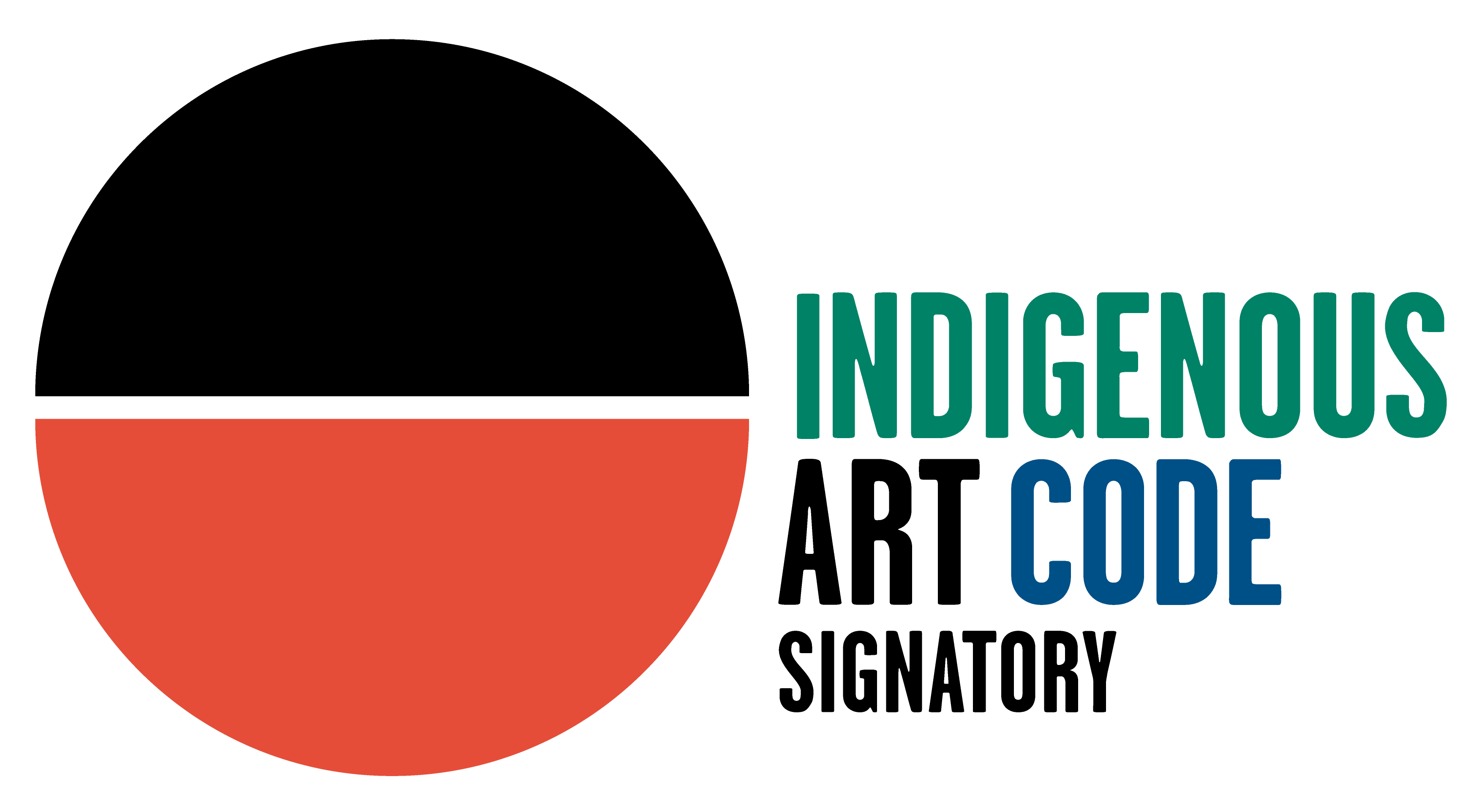Naminapu Maymuru-White began helping her fathers, Narritjin and Nanyin, paint their bark paintings and sculptures in their bark shelter on the beach at Yirrkala in about 1964 when she was twelve years old. Amongst the law she learnt over her long apprenticeship was the cycle of the Manggalili clan spirit which lies within the Milngiyawuy River (which correlates to the Milky Way in an astral dimension) before and after its mortal existences. Since then she has been exhibited and collected by many major national and international institutions and won major prizes.
She was an entrant in the very first National Aboriginal and Torres Strait Islander Art Award in 1984 and actually won the 'Best Work on Paper' prize in that competition in 1996. This award recognised her significance as one of the first indigenous artists to explore the new media of printmaking in the 1980s. Her importance was confirmed by 'Milky Way' - her first solo exhibition at Framed in 2004 which sold out including to the National Gallery of Australia.
This exhibition completes the cycle as it returns the iconography in a subtly refined style to its original medium. In the course of their journey through the print media the designs have become more concentrated and more graphic than they were but just as strongly based on their timeless origins. This has produced something new and fresh but incredibly well provenanced in cultural and art historical terms that not only shimmers with surface beauty but has an elegant structure within that allows no compromise.
A very short precis of the songs and law of this miny’tji (sacred clan design) follows. It was in the wangarr, ancestral times, when the Guwak (Koel Cuckoo) men, Munuminya and Yikawanga, sitting under the shade of the sacred Marawili ( a Gunyawu or bush cashew) tree, instructed the ancestral koel cuckoo Guwak to lead the Mangalili people to this new place they had established for them at Djarrakpi. Guwak’s assistant was Marrngu, the possum. Having seen the people settled in their new homeland they announced to the Mangalili their farewell, that they, the Guwak men were to travel out to sea, to a place in the sky and that they would become stars which would shine out of the night sky.
So a canoe and paddles were made and their journey began by paddling down the Milngiyawuy River which flows into the Blue Mud Bay near Djarrakpi. In the bay, at a place of significance, strong winds developed and a wake from the ancestral turtle capsized the canoe - the men drowned. This huge tidal wave probably recalls ancestral memories of a tsunami. The men had destined themselves as offerings, to the night sky where they and subsequent Mangalili souls are seen today in the Milky Way.
The death of the two Ancestral Hunters, the founders of Djarrakpi for the Mangalili clan of Yolngu, initiated the first rites of mortuary for these people.
Djarrakpi is located at the end of a remote cape (Cape Shield) on the western side of the Gulf of Carpentaria.
Here there are several extremely significant landmarks for the Mangalili including the Territory's biggest freshwater 'perched' lake set in sanddunes. This is the statement that Nami gave at the time of her first exhibition:
"Garma ngarrnguli djunama nhumanggala wångalili. Milkunharawu |apakiwu ga djamarrku`iwu.Yaka yåna wakalngu djåma. Dhuwala ngarraku djalkiri ga rom ngarraku."
"I have brought these paintings to you because I want to show and share with non-Aboriginal people and all of our young people. This is not my hobby but my identity and my foundation."

